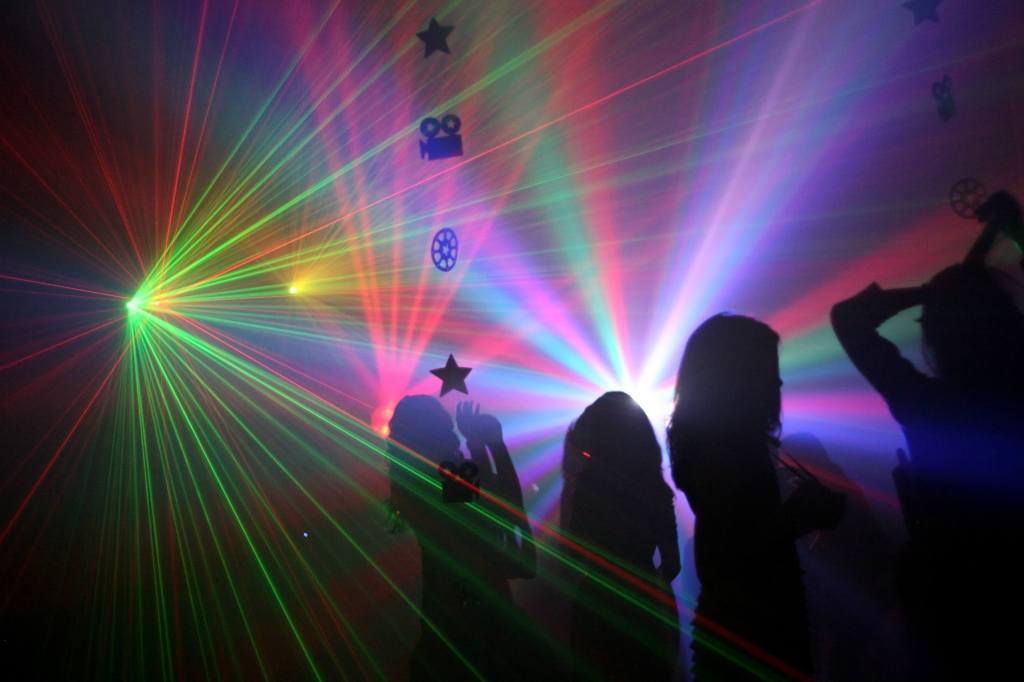In Praise of… Pattern Recognition

To clarify – this was a dance show at the Platform Theatre in April 2016, rather than a book. It was put on by Alexander Whitley, and I was taken to see it by my partner not ‘cos we know anything about dance (we don’t) but because it was a show in which dance and lights collided in a way we kinda had to see.
The premise is pretty simple. Two dancers perform on a stage, while three XBox Kinect sensors monitor their movements. That data is then translated and transmitted to eight moving lights. In various different ways, these lights respond to the movement of the dancers.
Let’s start with the awesome, and there’s a lot of awesome there to celebrate.
There are places in the show where this unity between light and dance is truly breathtaking. As the dancers move, cages and walls of light are created around and about them, they rise up as the dancers lift, fall to the floor as the dancers fall, twist and turn and leap and are generally integrated into the whole like another dance partner on stage. It’s something which maybe programming could achieve with a great deal of effort, but it’s also more than that. You can see the effect of data lag in the movers, a jerky stop-start as data is interpreted and the moving lights respond to the jagged motion of the performers, and it’s a far more natural, in a way, movement than you get with the pre-programmed stuff us ordinary LDs could pull from the bag. In a way it put me in mind of watching Wall-E (one of my favourite movies) in the sense that the lights took on their own character as the dancers interacted with them, and through the noise in the system and the occasional lag in data, almost became flawed and through being flawed, somehow felt more alive. At one point one of the dancers pulled one lamp out of the rest and almost seemed to dance with it, interacting with it as though it were a living thing, and the fact that it responded, even without the beam being active, following her movements in its jerky way, was like watching a puppy confused by the motion of its master.
As the movers were pulled into different configurations, they created different shapes and forms on the stage, sometimes pushing the shadows of the performers onto gauze walls, sometimes catching them in beams, sometimes darting out of the way so that it seemed the dancers were perpetually dodging the light. Nor was this just a flashy-mc-flashy spectacle; though there were places where I felt the lighting wasn’t necessarily adding much, there were others where it was so beautifully integrated that if the moving lights had been left to do a solo on stage, I would happily have felt myself moved by narrative and sucked in by the emotion of dancing beams against the darkness.
It was a brilliant bit of technological integration, and a fantastic use of technology in creating art.
Now. Let’s talk caveats.
I am not an officionado of dance; it is not a medium that is easily read by me, but as someone watching the show I wasn’t sure if the story that was being told, which felt as an audience member to be one of relationship, was anything world-blowing, nor that it necessarily suited the awesomeness of the technology that was integrated with it.
While many of the choices made for how the lights were used were incredible and did blow my tiny mind, there were also plenty of places where I didn’t feel that the lights were helping to tell a story. The genius of integrating data with motion is one thing; whether that data fully integrated with narrative is another.
Finally… as an LD I gotta admit I had… hum… questions… about certain ways the show was sold. On the paper given out to audience members after the performance certain words are thrown around by the undeniably talented choreographer/director/dancer Alexander Whitley. “Artificial intelligence allows computers to learn, much like we do…the lights, therefore, are not pre-programmed but are driven only by the movement of the dancers.”
Now. Firstly, ‘artificial intelligence’ is a very different thing from data interpretation, but that’s just nit-picking.
More, as an LD I gotta just flag this idea that the lights aren’t pre-programmed. Memo Akten is listed as ‘digital artist’ and I applaud his work, and the company as a whole for trying this thing. Yet at the same time Jamie Platt is listed as ‘Lights’ – a term guaranteed to make an LD tense, almost as tense as when people clap their hands together with a cry of ‘right, lights, do your thing!’ as if somehow we’re not people bathed in years of training and expertise – but thankfully is credited as Lighting Designer on the back. And here’s the thing – I saw a lighting design happen. I saw raw data being interpreted via the Kinect to the moving lights – but I also saw decisions that had been made about an overhead rig, choices about what kind of units to use, and then most crucially of all, choices about how the data being pulled from the motion-capture was interpreted. It’s this big word interpreted that means I have some questions about the show which I’d love to put to the team. Beautiful computing skills were used to pull data from the Kinect and turn it into DMX, but at some point a human mind with an eye to art chose to interpret the data as a strobe, or a pan/tilt, or as a colour, or as movement at a certain speed. At some point a human mind chose to interpret this data through the medium of having the units point here, not there, or respond on this scale of movement, not that. There is programming there; there is a conscious artistic choice being made.
None of this detracts from the excitement of the work or the idea necessarily, but if anything I’d find it more exciting, way more exciting, if a broader conversation about the interplay between technology and art happened here, in all its complexity, rather than a celebration of technological mystique.






